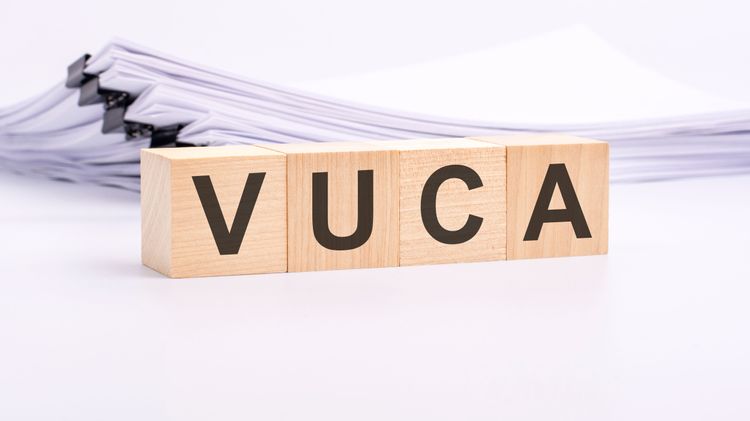Agile teams have become increasingly popular in today's constantly evolving business world. But what exactly is an agile team and what does it mean for a team to be agile? In essence, an agile team is a group of individuals who work together in a flexible, adaptive, and collaborative manner to deliver high-quality results quickly and efficiently. Agile for teams focuses on breaking down projects into small, manageable tasks and adapting to changes and feedback in real-time. In this article, we will explore what agile teams are, how to build agile teams, and the benefits of adopting agile methodologies for team development.

What is an Agile Team?
An Agile team is a cross-functional group of individuals who work collaboratively to achieve a common goal. These teams are typically small, self-organizing, and possess the necessary skills to complete a project from start to finish.
Agile teams operate within the framework of Agile methodology, which emphasizes flexibility, continuous improvement, and customer satisfaction. This approach allows teams to adapt to changes rapidly, ensuring that the final product or service meets the evolving needs and expectations of stakeholders.
Key Characteristics of an Agile Team
Small Size
Typically, Agile teams consist of 5-9 members. A smaller team size promotes efficient communication and collaboration, making it easier for team members to stay aligned with project goals and tasks. This close-knit structure fosters a strong sense of accountability and team cohesion, as everyone is clearly aware of their roles and responsibilities.
Cross-functional
Agile teams are cross-functional, meaning they include members with diverse skill sets required to complete various aspects of the project. This can include software developers, testers, designers, and product managers. By having all necessary skills within the team, Agile teams can handle tasks independently without relying heavily on external resources, which streamlines the development process and reduces delays.
Self-organising
Agile teams are self-organising, giving them the autonomy to decide how to best accomplish their tasks. This means the team collectively determines the best approach to achieve their objectives, encouraging innovation and creative problem-solving. Self-organisation empowers team members, increases engagement, and often leads to higher productivity and job satisfaction.
Continuous Improvement
A cornerstone of Agile methodology is the commitment to continuous improvement. Agile teams regularly hold retrospectives—meetings where they reflect on their recent work, discuss what went well, and identify areas for improvement. This iterative process ensures that the team is constantly learning and evolving, adapting their strategies to enhance performance and deliver better results over time.
Customer Focus
Agile teams place a strong emphasis on customer satisfaction. By engaging with stakeholders and customers throughout the development process, Agile teams ensure that the final product meets or exceeds expectations. This customer-centric approach helps in prioritising tasks that deliver the most value and in making informed decisions that align with user needs.
Key Roles in an Agile Team
Product Owner
The Product Owner is responsible for defining the vision of the product and prioritising the backlog. They ensure that the team focuses on tasks that deliver the highest value to customers and stakeholders. The Product Owner also collaborates closely with the team to provide clarity on the goals and objectives of each sprint.
Scrum Master
The Scrum Master facilitates the Agile process within the team. They help remove any impediments that may hinder the team's progress and ensure that the principles of Agile and Scrum are adhered to. By promoting effective communication and collaboration, the Scrum Master helps the team stay focused and productive.
Development Team Members
Development team members are the core of any Agile team. This group includes software developers, testers, designers, and other professionals with the skills necessary to build the product. Each team member contributes their expertise to deliver a high-quality product. They collaborate closely, share responsibilities, and continuously seek ways to improve their work.
Essential Elements of Effective Agile Teams
Clear Goals and Vision
Every Agile team must have a clear understanding of their goals and vision. This clarity helps team members stay focused and aligned with the project’s objectives. Setting specific, measurable, achievable, relevant, and time-bound (SMART) goals can guide the team towards success.
Effective Communication
Effective communication within the team is crucial for Agile project management. Regular meetings, such as daily stand-ups, sprint planning, and retrospectives, keep everyone informed and involved. These meetings help team members collaborate and address any issues promptly, ensuring a smooth workflow.
Collaboration Tools
Using the right collaboration tools can significantly enhance team performance. Tools like JIRA, Trello, and Slack help Agile teams manage their tasks, track progress, and communicate effectively. These tools support the Agile framework by providing a centralised platform for information sharing and collaboration.
Continuous Improvement
Agile teams continuously seek ways to improve their processes and performance. Regular retrospectives provide opportunities for the team to reflect on their work, identify what went well, and pinpoint areas for improvement. By implementing these changes, teams can enhance their efficiency and deliver better results.
Empowered and Self-organising Teams
For Agile teams to thrive, they must be empowered to make decisions and self-organise. This autonomy allows team members to take ownership of their tasks and collaborate more effectively. Empowered teams are more motivated and can adapt quickly to changes, ensuring that the project stays on track.
Cross-functional Skill Sets
Agile teams are cross-functional, meaning they include members with diverse skill sets required to complete various aspects of the project. This diversity allows the team to handle tasks independently without relying heavily on external resources, which streamlines the development process and reduces delays.
Customer Feedback
Incorporating customer feedback is a vital aspect of Agile development. Engaging with stakeholders and customers throughout the development process ensures that the final product meets or exceeds expectations. This customer-centric approach helps in prioritising tasks that deliver the most value and in making informed decisions that align with user needs.

How to Build an Agile Team
Transitioning from Traditional to Agile Teams
Transitioning from traditional project management methodologies to Agile requires a shift in mindset and practices. Start by educating your team about Agile principles and the benefits of Agile project management. Gradually introduce Agile practices and tools, allowing the team to adapt at their own pace.
Selecting Team Members
Choosing the right team members is crucial for building an effective Agile team. Look for individuals with diverse skill sets, a collaborative mindset, and the ability to adapt to changes. It’s essential to have a balanced mix of skills and experiences to handle different aspects of the project.
Training and Development
Ongoing training and development are vital for maintaining a high-performing Agile team. Provide opportunities for team members to learn new skills, attend Agile workshops, and obtain certifications like Certified ScrumMaster (CSM) or Certified Scrum Product Owner (CSPO). Continuous learning helps the team stay updated with the latest Agile practices and enhances their performance.
Setting Up Agile Ceremonies
Agile ceremonies, such as sprint planning, daily stand-ups, and retrospectives, are integral to the Agile framework. These ceremonies help the team stay aligned, track progress, and continuously improve their processes. Establishing a regular schedule for these meetings ensures that the team stays focused and productive.
Managing the Backlog
An effective backlog management process is crucial for Agile teams. The Product Owner should prioritise tasks based on their value and importance, ensuring that the team works on the most critical items first. Regularly reviewing and updating the backlog keeps it relevant and aligned with the project’s goals.
Overcoming Resistance to Change
Transitioning to Agile can sometimes meet resistance from team members used to traditional project management methods. Address this resistance by communicating the benefits of Agile, providing training, and involving the team in the transition process. Encouraging an open dialogue and addressing concerns can help ease the transition.
Ensuring Consistency in Agile Practices
Maintaining consistency in Agile practices is essential for the success of the team. Regularly review the team’s adherence to Agile principles and practices, and make adjustments as needed. Ensuring consistency helps the team develop a rhythm and work more efficiently.
Balancing Flexibility with Control
While Agile teams need to be flexible, it’s also important to maintain some level of control to ensure productivity. Establish clear guidelines and boundaries within which the team can operate autonomously. This balance allows the team to adapt to changes while staying focused on their goals.
Overcoming Common Challenges
Building and maintaining an Agile team can present several challenges. Here’s how to overcome some of the most common ones:
Resistance to Change
Transitioning to Agile can be met with resistance from team members accustomed to traditional project management methods. To overcome this, we recommend providing comprehensive training on Agile principles and the benefits they bring. Encourage open discussions to address concerns and highlight success stories from other teams that have successfully made the transition. By fostering an environment of transparency and support, team members can gradually adapt to the new methodology.
Ensuring Consistency in Agile Practices
Consistency in Agile practices is crucial for team success. Regularly reviewing and refining Agile practices within the team is important to achieve this. Establishing clear guidelines and holding periodic check-ins can help ensure that the team adheres to Agile principles. Using Agile metrics, such as velocity and sprint burndown charts, can also provide valuable insights into the team’s performance and highlight areas for improvement.
Balancing Flexibility with Control
While flexibility is a key aspect of Agile, maintaining a certain level of control is essential to ensure productivity. Set clear boundaries and guidelines that allow the team to self-organise while staying aligned with the project’s objectives. Regularly review the team’s progress and provide constructive feedback to help them stay on track. Balancing flexibility with control ensures that the team remains agile while meeting project goals.
Managing Cross-functional Teams
Cross-functional teams bring together diverse skill sets, which can sometimes lead to communication and collaboration challenges. To overcome this, use effective collaboration tools and establish regular communication channels. Encourage team members to share their expertise and learn from each other, fostering a collaborative environment. Regular team-building activities can also help in creating a cohesive and high-performing team.
Dealing with Stakeholder Expectations
Managing stakeholder expectations can be challenging, especially in a dynamic Agile environment. Keep stakeholders informed by providing regular updates on the team’s progress. Use sprint reviews and demonstrations to showcase completed work and gather feedback. This transparency helps build trust and ensures that stakeholder needs are met. Setting realistic expectations and maintaining open lines of communication are key to managing stakeholder relationships effectively.
Measuring Success in Agile Teams
Velocity
Velocity measures the amount of work a team completes in a sprint. It helps in understanding the team’s capacity and planning future sprints. Tracking velocity over time can indicate improvements in the team’s efficiency and highlight any bottlenecks that need to be addressed.
Sprint Burndown Chart
A sprint burndown chart visualises the work remaining in a sprint. It helps teams monitor their progress and identify any deviations from the plan. By regularly reviewing the burndown chart, teams can make necessary adjustments to stay on track and ensure timely delivery.
Team Satisfaction
Team satisfaction is a crucial metric for measuring the success of Agile teams. Conduct regular surveys to gauge team morale and identify any areas of concern. Happy and motivated team members are more likely to be productive and deliver high-quality work.
Quality of Deliverables
The quality of deliverables is a key indicator of the team’s performance. Track metrics such as defect density and customer satisfaction to assess the quality of the products delivered. Regular feedback from stakeholders and customers can provide valuable insights into the team’s effectiveness.
Cycle Time
Cycle time measures the time taken to complete a task from start to finish. It helps in understanding the team’s efficiency and identifying any delays in the development process. By analysing cycle time, teams can streamline their processes and improve productivity.
Customer Feedback
Customer feedback is vital for assessing the success of Agile teams. Regularly engage with stakeholders and customers to gather feedback on the delivered product. This feedback helps in understanding customer satisfaction and identifying opportunities for improvement.
Agile Metrics and Tools
Using Agile metrics and tools can provide valuable insights into the team’s performance. Tools like JIRA, Trello, and Slack offer built-in reporting features that help track various metrics. Regularly reviewing these metrics can help teams identify trends, make data-driven decisions, and continuously improve their processes.
Conclusion
Understanding and implementing Agile teams is crucial for enhancing project success and organisational efficiency. By addressing common challenges and measuring success through key performance indicators, your teams can achieve high performance and deliver exceptional results. If you’re ready to optimise your development processes and build high-performing Agile teams, Inpositiv is here to help. Based in Bern, Switzerland, our Agile consulting services provide tailored solutions to meet your specific needs. Contact us today to learn how we can support your journey towards Agile excellence and drive your projects to success.




